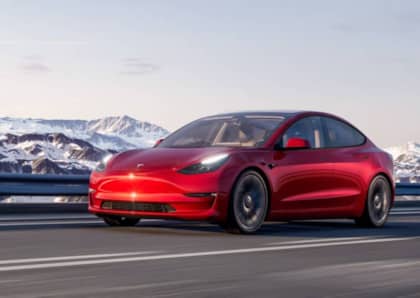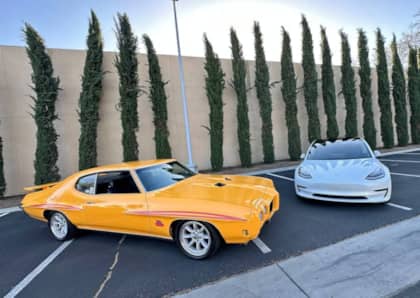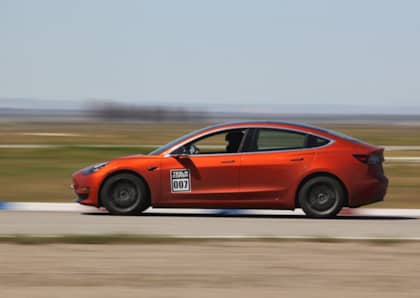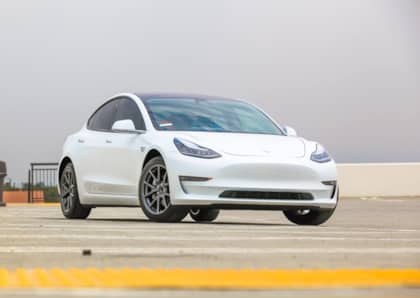More Than Just an EV? Project Tesla Model 3 Performance Buying Experience & Ownership Impressions
It isn't a stretch to say that Tesla is the most polarizing carmaker on earth right now. It seems that for every hardcore, overly-defensive fan of Elon Musk's EVs, another person hates them just as much — blindly so at times. But what about the rest of us? You know, the larger group that sits somewhere in the middle.
What's it like living with a Tesla in the real world? And more importantly, from an enthusiast's perspective, can a Tesla EV be a genuinely fun, track-capable alternative to gasoline performance cars?

These are some of the questions I sought to answer when I became the owner of a 2020 Model 3 Performance earlier this year.
Why the Model 3 Performance?
The raw capability of Tesla's performance models is well known, but it's only recently that prices have dropped enough for them to be considered "affordable" — at least by modern car standards. In fact, a Tesla is really the only new or used car that's more affordable today than it was three years ago.

Back in 2018, I'd driven a friend's Model 3 Performance and was quite impressed from a technological standpoint. But I never imagined I'd own one.
For one, it was way out of my price range — and even if I could afford one, being a red-blooded gearhead I wasn't sure I could justify spending that kind of money on an electric car.

But then, as I watched prices gradually drop, and kept hearing about the cool things enthusiasts and weekend track day junkies were doing with the Model 3 platform, my interest level continued to rise.
Finally, after this year's major price drop, which trickled down to the used market as well, I could no longer hold my curiosity at bay.
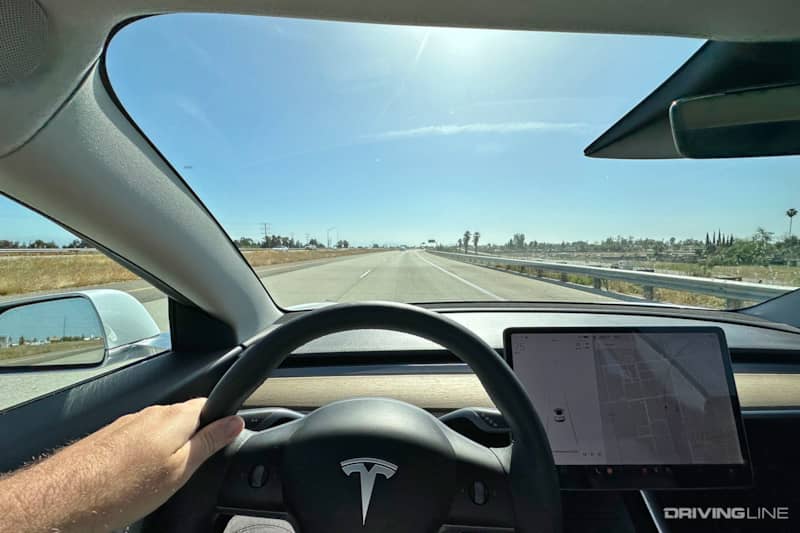
After getting the ok from the wife (who'd also be the primary driver of this car), I pulled the trigger on a white, 2020 Model 3 Performance that had just under 20,000 miles on it.
Things I Love
Now, several months later I've had enough seat time in the car to get some real-world impressions and observations.
First up is performance. The car is fast, almost violently so. It will do 0-60 in about three seconds and run a quarter mile in the mid-11s. But you can also put it in "Chill Mode" and drive it like a grandma, never even tapping into its supercar-grade acceleration.

And the handling is nearly as impressive. The Model 3 Performance is not a light car, but it feels lightfooted — and that's one of the big things that sets it apart from other fast electric vehicles.
Another thing I love about the car is driving position and outward visibility, which feels like a modern version of a Honda from the '80s with a low dashboard and airy cabin.
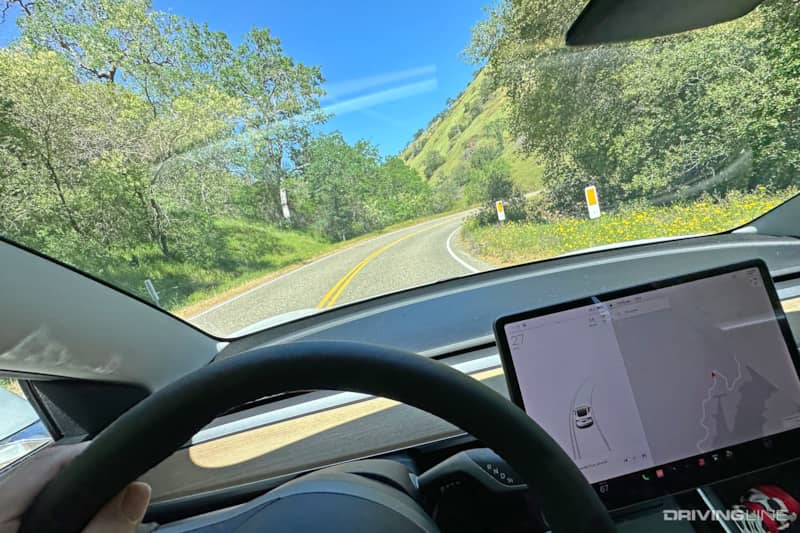
Coming from something like a modern Mustang or Camaro which can feel like sitting in the bottom of a bunker inside, it's a breath of fresh air and something of great benefit during both everyday commuting and spirited driving.
Charging Experience
Then there's Supercharging. This is the gamechanger for Tesla when compared to other EVs. Yes, the vast Supercharing network is vital for road trips, but I've found myself using my local superchargers quite a bit as well.

While the majority of my charging is done at home, if you find yourself unusually low on charge after a full day of driving, you can simply drop by your local Supercharger that evening and "fill up" while you spend 20 minutes grocery shopping or grabbing dinner.

Things I Don't Love
As with any car there are some drawbacks to the Model 3, though I have to say these come more from the "enthusiast" side than as a daily driver.

The first of course, is the obvious lack of sound. In a car mostly used for commuting this can be a good thing, but the silent drivetrain (and lack of a manual transmission) is something that will probably keep the Model 3 from being someone's weekend toy.
It's fast, comfortable and extremely competent, but it just isn't the kind of car you find yourself yearning to drive just by looking at it. But in the car's defense, this was all stuff I was expecting going into it.

What might be harder to deal with for some enthusiasts is how common they are on the road in certain places. If you are someone who wants to drive something "cool" or unique, a Tesla Model 3 isn't going to be ideal — especially if you live in a place like California.
Not only are they one of the most common vehicles on the road, but the lack of colors and other exterior options also make them stand out even less. When at a Supercharger station, you may have to double-check that you go back to your car and not one that looks identical.

On the plus side, you certainly won't have to worry about unwanted attention. And if you wanted to go on a crime spree in California, a white Tesla Model 3 would be an ideal vehicle choice.
What's to Come?
Fortunately, I have some upgrades planned that will help my Model 3 stand out from the crowd a little bit. No I won't be doing a prism wrap like you sometimes see, but I'm excited to start playing with the wheels, tires and suspension and to explore the potential of the platform.

And as soon as I do that, I'll be heading to the racetrack and autocross where I plan to join the small, but growing community of track nerds that enjoy pushing their Teslas to the limits.
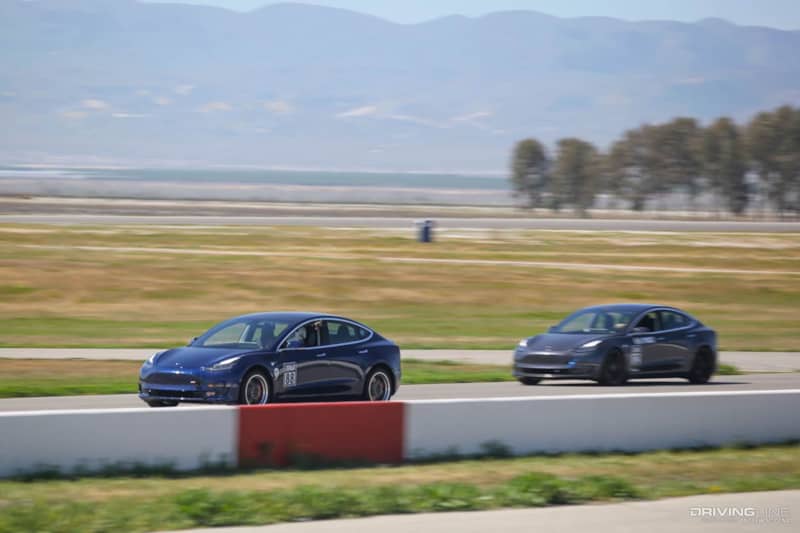
While you can't add power to a Model 3 the way you can a gasoline car, I've heard from many different people that simple suspension upgrades and good tires can take the car's track performance and fun factor to a new level.

And after tracking some of my past vehicles like a Honda Civic Type R and S550 Mustang GT, I'll be excited to see how the Model 3 track experience compares.

It's been interesting so far, but we are just getting started. Stay tuned as I continue to share my impressions, some of the mindset that goes into upgrading a Model 3 for track use and how a Tesla shapes up as an alternative to modern gasoline performance cars.
More From Driving Line
- Looking for more insight on EVs for gasoline cars? Here are some reasons why enthusiasts should be both scared of - and excited for the electric movement.




